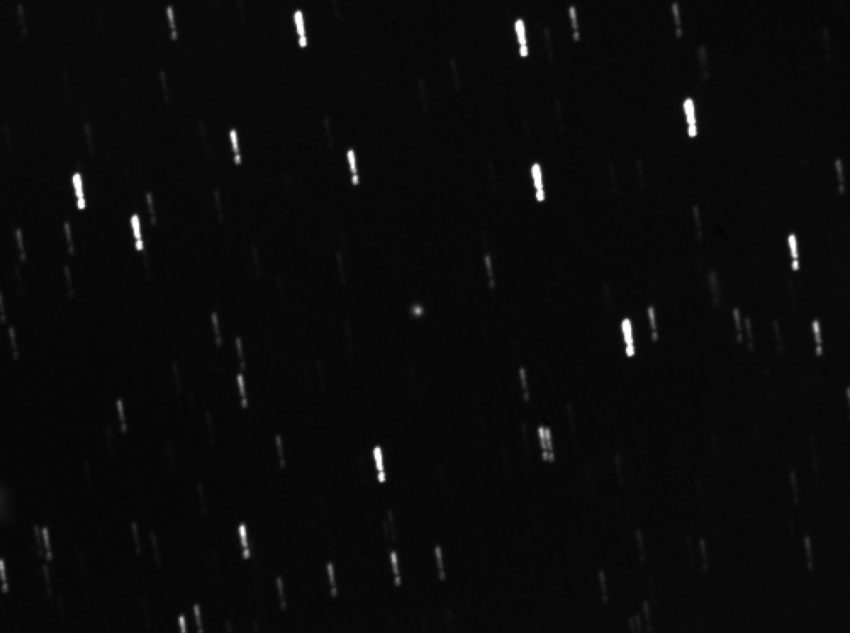It may not look like much for now. It is still very far away. But by November and December of 2013 and January 2014 when it makes its extremely close encounter with the Sun, Comet C/2012 S1ISON is expected to become a great comet so bright it may become visible during day time.
For now Comet Ison is a little more than a small speck of light in this cropped image exposed a total of 20 minutes through a 16 inch telescope. Though no tail was captured, the coma exhibits definite fuzziness. The comet is presently moving westward roughly between Castor and Pollux in the constellation Gemini.
Comet Ison is currently just inside the orbit of Jupiter at a distant 5.2 Astronomical Units from the Sun. One Astronomical Unit (AU) is the distance of the Earth from the Sun. Its orbit indicates that this is probably its first time to visit our solar system from the unknown deep reaches of space. Its virgin nucleus has never yet been heated up and depleted by a vaporizing close encounter with a hot star like the Sun. This factor, its intrinsic present brightness, and the fact that it will come to an extremely close 0.01AU at closest approach to the Sun (on November 28, 2013) make it a candidate to become a “great” and exceptionally bright comet.
C/2012 S1 was discovered on September 21, 2012 by the International Scientific Optical Network (ISON) in Russia using a 16 inch f3 reflector telescope and four 100 second CCD exposures.


